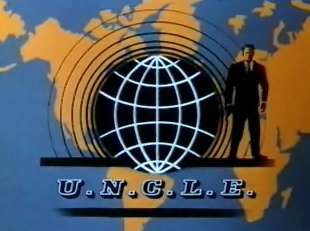
The Man from U.N.C.L.E. is an American spy fiction television series produced by Metro-Goldwyn-Mayer Television and first broadcast on NBC. The series follows secret agents Napoleon Solo, played by Robert Vaughn, and Illya Kuryakin, played by David McCallum, who work for a secret international counterespionage and law-enforcement agency called U.N.C.L.E.. The series premiered on September 22, 1964, and completed its run on January 15, 1968. The program was part of the spy-fiction craze on television, and by 1966 there were nearly a dozen imitators. Several episodes were successfully released to theaters as B movies or double features. There was also a spin-off series, The Girl from U.N.C.L.E., a series of novels and comic books, and merchandising.

Secret Agent is a 1936 British espionage thriller film directed by Alfred Hitchcock, adapted from the play by Campbell Dixon, which in turn is loosely based on two stories in the 1927 collection Ashenden: Or the British Agent by W. Somerset Maugham. The film stars Madeleine Carroll, Peter Lorre, John Gielgud, and Robert Young. It also features uncredited appearances by Michael Redgrave, future star of Hitchcock's The Lady Vanishes (1938), Michel Saint-Denis as the Coachman, and Michael Rennie in his film debut.

I Spy is an American secret-agent adventure television series that ran for three seasons on NBC from September 15, 1965, to April 15, 1968, and teamed US intelligence agents Kelly Robinson and Alexander "Scotty" Scott, traveling undercover as international "tennis bums." Robinson poses as an amateur with Scott as his trainer, playing against wealthy opponents in return for food and lodging. Their work involved chasing villains, spies, and beautiful women.

Emmett Evan "Van" Heflin Jr. was an American theatre, radio, and film actor. He played mostly character parts over the course of his film career, but during the 1940s had a string of roles as a leading man. Heflin won the Academy Award for Best Supporting Actor for his performance in Johnny Eager (1942). He also had memorable roles in Westerns such as Shane (1953), 3:10 to Yuma (1957), and Gunman's Walk (1958).
Charlie Muffin is a 1979 made-for-TV film based on the 1977 novel of the same name by Brian Freemantle. In the U.S.A., the picture was later re-released under the title A Deadly Game.
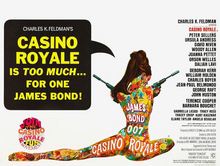
Casino Royale is a 1967 spy parody film originally distributed by Columbia Pictures featuring an ensemble cast. It is loosely based on the 1953 novel of the same name by Ian Fleming, the first novel to feature the character James Bond.

Carry On Spying is a 1964 British spy comedy film directed by Gerald Thomas. It is the ninth in the series of 31 Carry On films (1958–1992).

Eric Pohlmann was an Austrian theatre, film and television character actor who worked mostly in the United Kingdom. He is known for voicing Ernst Stavro Blofeld, the primary antagonist of the James Bond series, in the films From Russia with Love and Thunderball.

A Dandy in Aspic is a 1968 neo-noir Technicolor and Panavision British spy film, directed by Anthony Mann, based on the 1966 novel of the same name by Derek Marlowe and starring Laurence Harvey, Tom Courtenay, and Mia Farrow, with costumes by Pierre Cardin. It was Mann's final film.
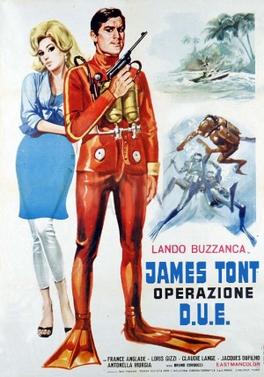
Eurospy film, or Spaghetti spy film, is a genre of spy films produced in Europe, especially in Italy, France, and Spain, that either sincerely imitated or else parodied the British James Bond spy series feature films. The first wave of Eurospy films was released in 1964, two years after the first James Bond film, Dr. No, and in the same year as the premiere of what many consider to be the apotheosis of the Bond series, Goldfinger. For the most part, the Eurospy craze lasted until around 1967 or 1968. In Italy, where most of these films were produced, this trend replaced the declining sword and sandal genre.
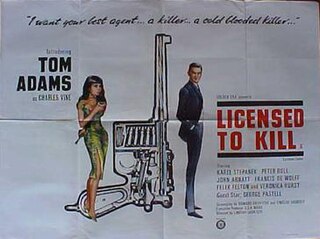
Licensed to Kill is an Eastmancolor 1965 superspy imitation James Bond film starring Tom Adams as British secret agent Charles Vine. It was directed and co-written by Lindsay Shonteff. Producer Joseph E. Levine picked it up for American and worldwide distribution and reedited it under the title The Second Best Secret Agent in the Whole Wide World.
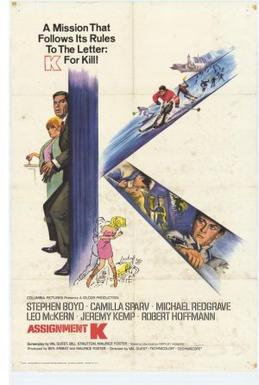
Assignment K is a 1968 British spy thriller film directed by Val Guest in Techniscope and starring Stephen Boyd, Camilla Sparv, Michael Redgrave, Leo McKern, Robert Hoffmann and Jeremy Kemp. The film was based on the 1964 novel Department K by Hartley Howard.
Pinkas Braun was a Swiss film actor. He appeared in 70 films between 1952 and 2002. He was born in Zürich, Switzerland and died in Munich, Germany.

The Big Bounce is a 1969 American drama film directed by Alex March, based on the 1969 novel of the same name by Elmore Leonard and starring Ryan O'Neal in his film debut, Van Heflin, and Leigh Taylor-Young in what was the first of several films based on Leonard's crime novels. Taylor-Young was nominated for a Laurel Award for her performance in the film. The film was shot on location in Monterey and Carmel, California.

The Salzburg Connection is a 1972 American thriller film directed by Lee H. Katzin, starring Barry Newman and Anna Karina. It is based on the 1968 novel of the same title by Helen MacInnes. It was filmed in DeLuxe Color and Panavision. The sets were designed by the art director Hertha Hareiter. Extensive location shooting took place around Salzburg and at Lake Toplitz. The novel involves Nazi secret files found in a lake in similar circumstances to Lake Toplitz (Finstersee). Lake Toplitz is mentioned throughout the book also. Finstersee is the scene of action and is also shown on slides in the movie.

The File of the Golden Goose is a 1969 British neo noir thriller film directed by Sam Wanamaker and starring Yul Brynner, Charles Gray and Edward Woodward. Its plot involves an American detective being sent to Britain to track down a major international criminal.
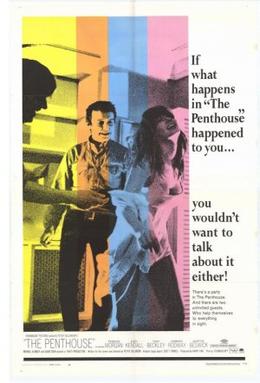
The Penthouse is a 1967 British drama thriller film directed by Peter Collinson. It stars Terence Morgan and Suzy Kendall and was based on a 1964 play The Meter Man by Scott Forbes.
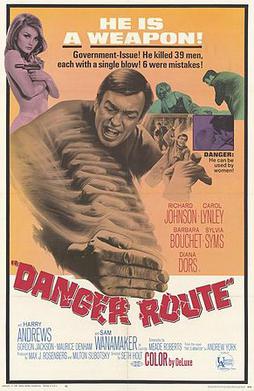
Danger Route is a 1967 British spy film directed by Seth Holt for Amicus Productions and starring Richard Johnson as Jonas Wilde, Carol Lynley and Barbara Bouchet. It was based on Andrew York's 1966 novel The Eliminator that was the working title of the film.
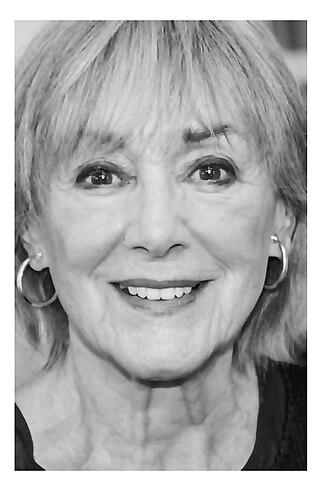
Heidelinde Weis was an Austrian actress. Weis died on 24 November 2023, at the age of 83.

Lightning Bolt is a 1966 spy-fi film shot in Techniscope in 1965 that was directed by Anthony Dawson in his first entry into the Eurospy genre. The film was co-financed and released in the US by the Woolner Brothers who re-titled it Lightning Bolt with the tagline "strikes like a ball of thunder". It was released as a double feature with Red Dragon in 1967 two years after the film had been shot. The film's star, Anthony Eisley, commented that the film was released too late to take advantage of the James Bond craze.


















